Click-through rate (CTR) is one of the most useful and effective metrics that measure ad engagement for a PPC campaign. As a PPC expert or a digital marketer, you must know how to calculate CTR and how to make sense of your campaign’s CTR. There’s no way to escape it. It is essential.
This article covers how to calculate CTR in detail, as long as the benefits of doing it, and industry average CTRs. This will allow you to properly interpret your CTR and use it for better decision-making.
What is CTR?
Click-through rate is a percentage that measures how many people clicked your ad as compared to the people who saw it. A CTR of 100% means all the people who see your ad click it. A high CTR means a lot of people who see your ad are clicking it. Obviously, this is an ideal situation.
CTR tells you two things:
- Which ads are getting clicks and are performing well
- Which ads aren’t getting enough clicks and need to be paused and/or modified
The CTR provides you with a quick snapshot of your ads, ad groups, keywords, and campaigns. You can even apply a CTR-based filter in Google Ads for detailed analysis.
How to Calculate CTR?
The formula to calculate CTR is:
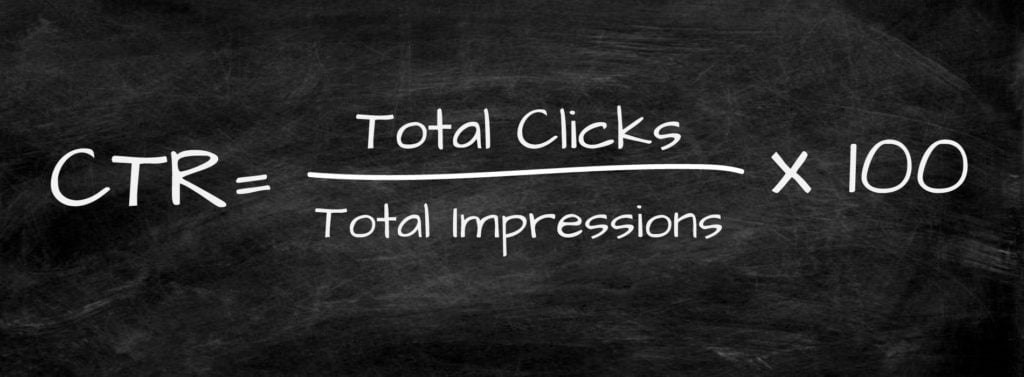
You need two variables to calculate CTR:
- Clicks
- Total impressions
Let’s assume your ad received 100 impressions and it was clicked by 9 people. Here is how to calculate CTR based on this data:
CTR = 9 / 100 x 100
CTR = 0.09 x 100
CTR = 9%
Remember, CTR is always reported as a percentage.
Benefits of Calculating Your CTR
Generally, ad networks like Google Ads clearly mention CTR with the reporting data. You might not have to calculate CTR but you must know how to calculate CTR as it has several benefits such as:
- Allowing you to compare CTRs of different ads, ad groups, and keywords that your ad network doesn’t calculate or show
- If you know how to calculate CTR, interpreting it won’t be an issue anymore
- If your ad network doesn’t report CTR, you’ll be able to calculate it yourself from clicks and impressions data
- You can generate customized click, impression, and CTR reports for all the campaigns that you run each month in a spreadsheet, for in-house use
- Enabling you to compare month-to-month PPC campaigns based on CTR for decision-making
Industry Average CTR for Different Industries
Click-through rate is a relative metric that varies from campaign to campaign and from industry to industry. Knowing how to calculate your CTR won’t help much if you don’t know how to make sense of the resulting percentage.
When it comes to CTR, the higher it is, the better. A high CTR means that the majority of the people are clicking your ads indicating your ads are relevant and driving clicks.
However, achieving a high CTR with Google Ads isn’t a piece of cake. You’ll notice that the average CTR is usually under 10% for the majority of the campaigns. A low CTR doesn’t necessarily mean your ads are underperforming.
Why?
You might be doing exceptionally well as compared to other businesses in your industry.
This is why comparing your CTR with industry benchmark CTRs is essential. It provides you with a clearer picture of your CTR and it makes more sense.
One of the leading CTR benchmark reports for Google Ads is released by WordStream. The CTRs are differentiated based on the type of ad you are running: Search vs. Display:
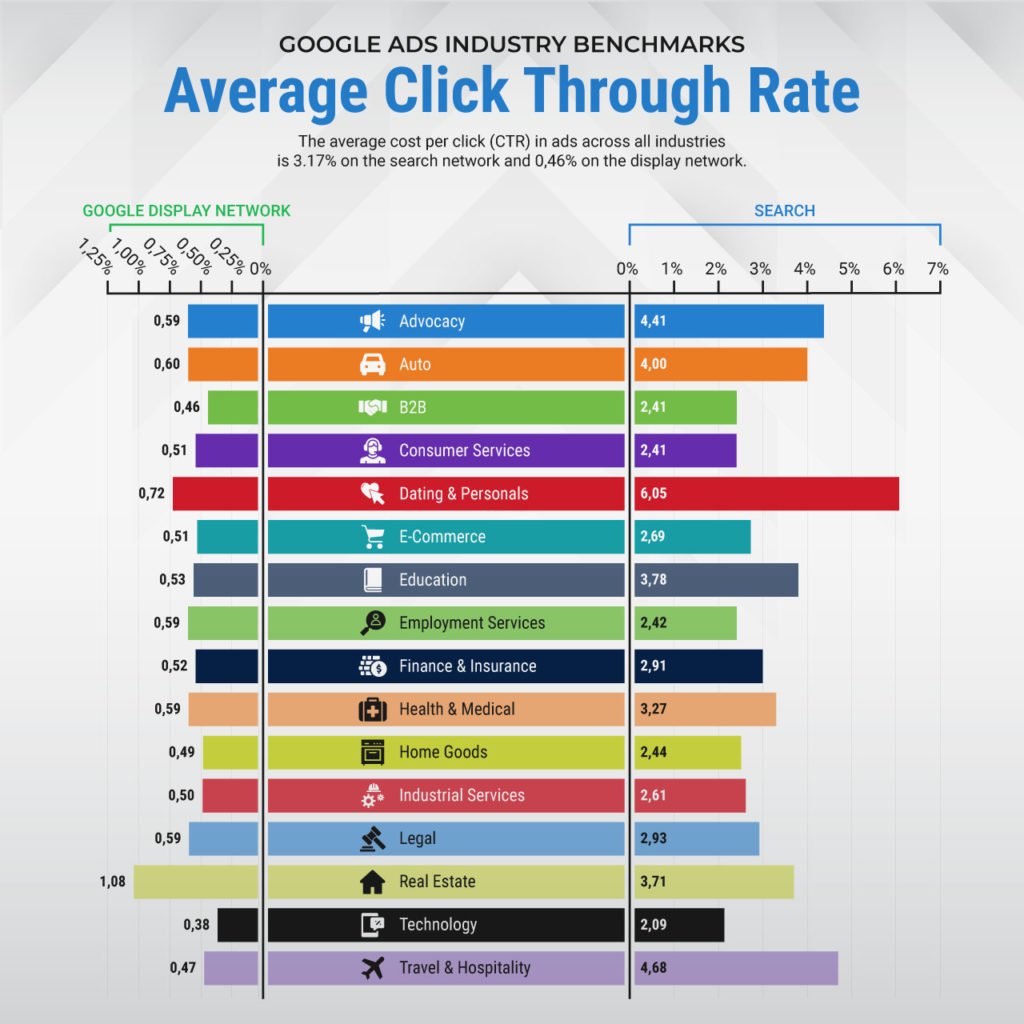
AdStage also publishes click-through rate statistics and benchmark reports. Here is the average CTR for Google Search campaigns across all industries in Q2, 2019:
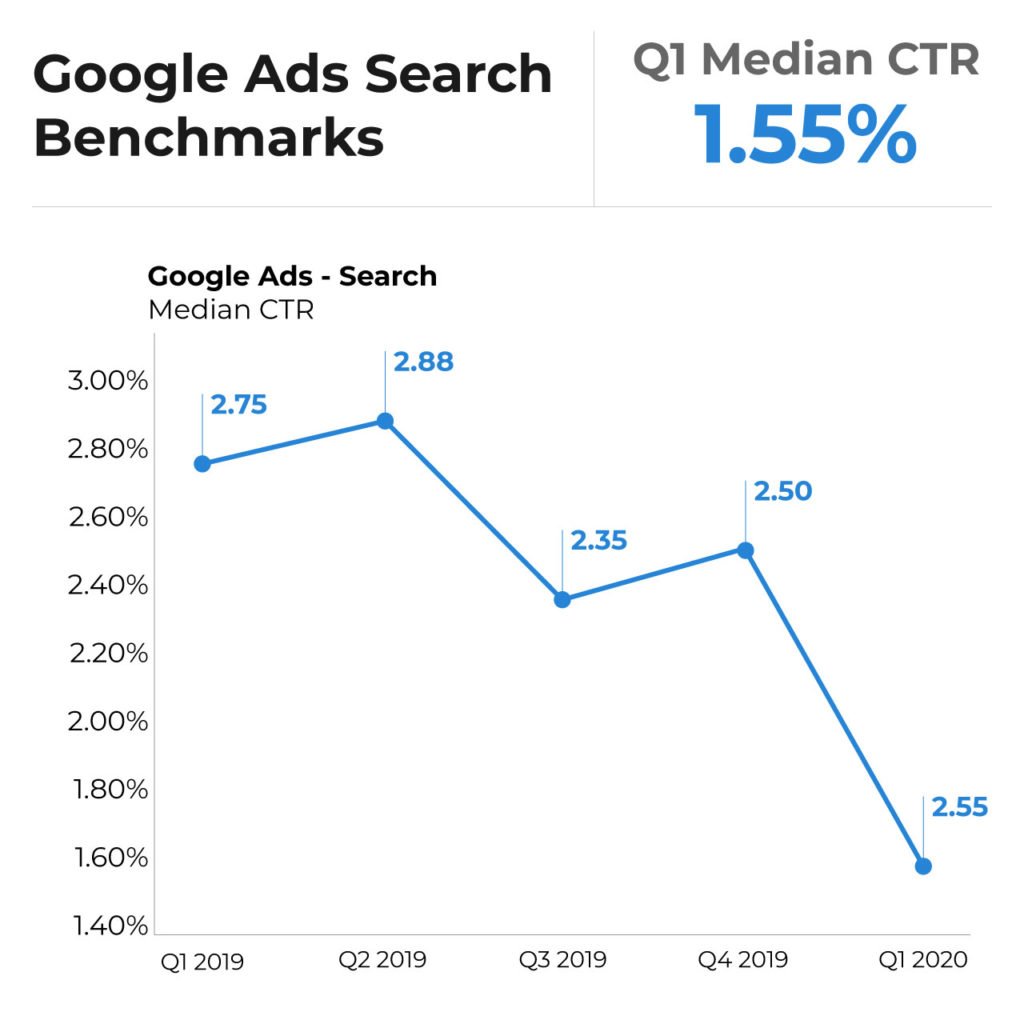
Here is the average CTR for the Google Display network benchmark:
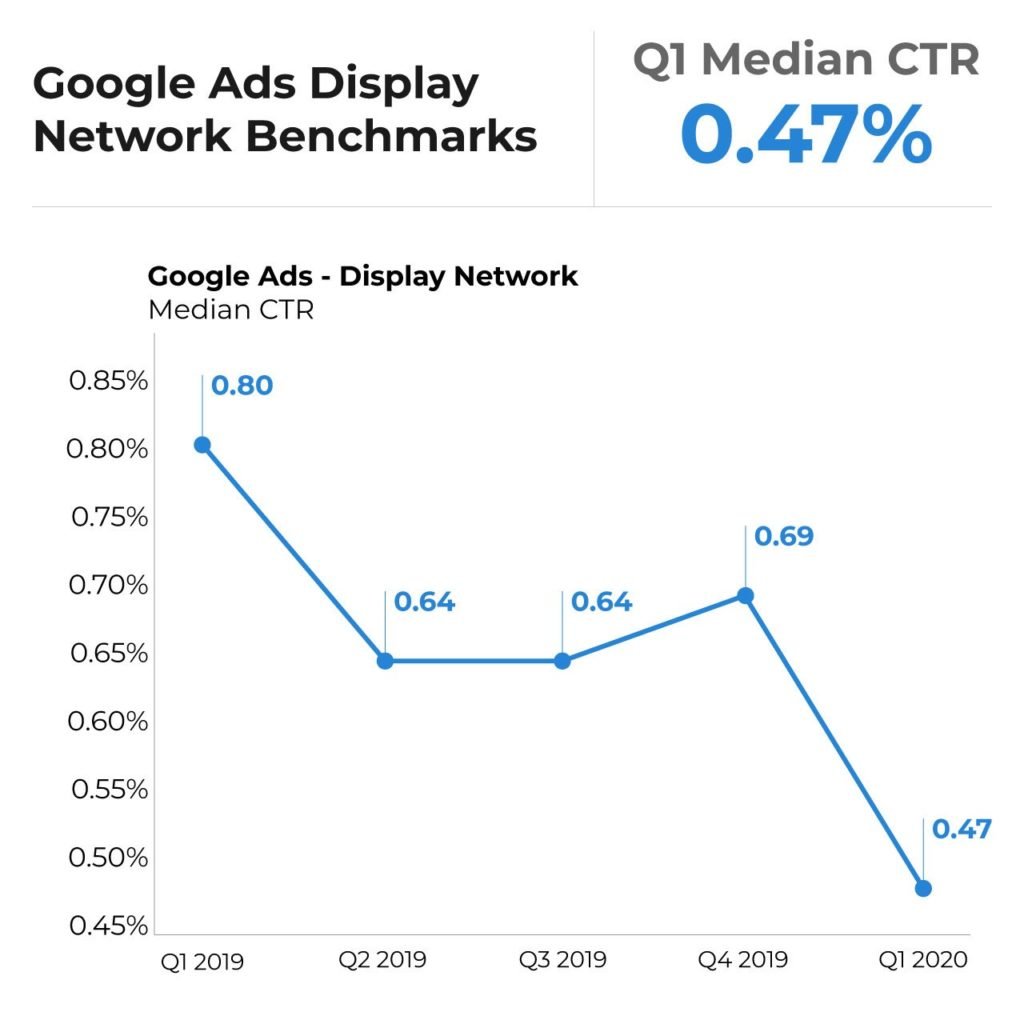
If you run ads on multiple ad networks across multiple geographies, you must use search advertising CTR worldwide report by Statista for comparison. It isn’t ad network-specific and considers global search ad CTR:
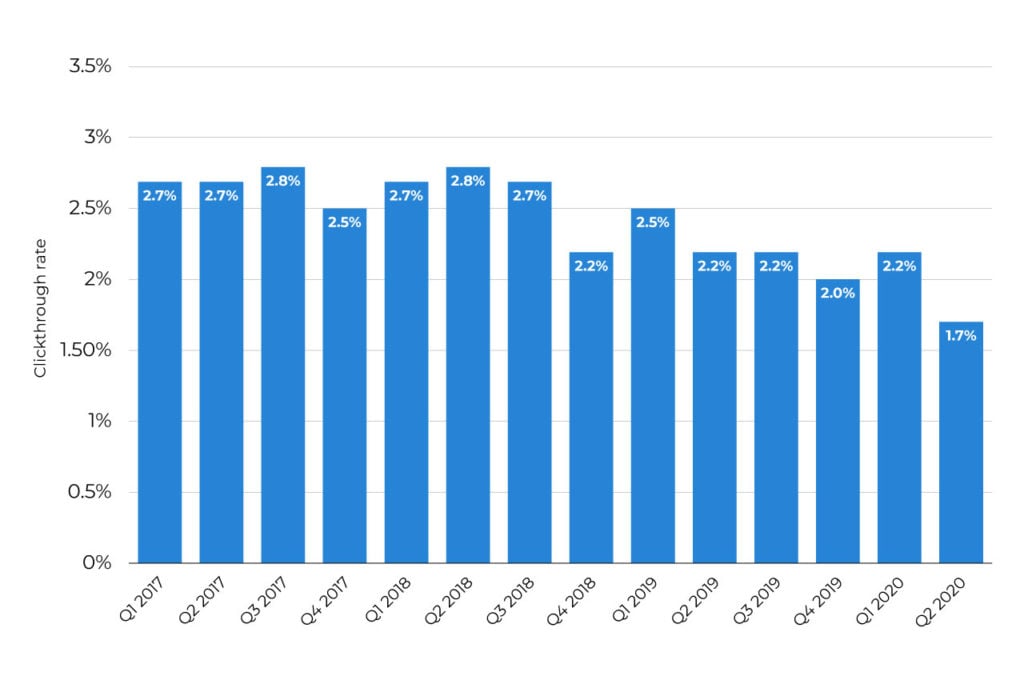
Here is a list of industry average CTR 2020 for Google search and display ads (according to WordStream):
- Advocacy (Search: 4.41%, Display: 0.59%)
- Auto (Search: 4%, Display: 0.60%)
- B2B (Search: 2.41%, Display: 0.46%)
- Consumer Services (Search: 2.41%, Display: 0.51%)
- Dating & Personals (Search: 6.05%, Display: 0.72%)
- Ecommerce (Search: 2.69%, Display: 0.51%)
- Education (Search: 3.78%, Display: 0.53%)
- Employment services (Search: 2.42%, Display: 0.59%)
- Finance & Insurance (Search: 2.91%, Display: 0.52%)
- Health & Medical (Search: 3.27%, Display: 0.59%)
- Home Goods (Search: 2.44%, Display: 0.49%)
- Industrial Services (Search: 2.61%, Display: 0.50%)
- Legal (Search: 2.93%, Display: 0.59%)
- Real Estate (Search: 3.71%, Display: 1.08%)
- Technology (Search: 2.09%, Display: 0.39%)
- Travel & Hospitality (Search: 4.68%, Display: 0.47%)
Here is how to use these CTR benchmark reports to compare your CTR:
- Calculate your CTR separately for search and display ad networks (Refer to how to calculate CTR section above)
- Identify your industry and compare your CTR with the industry benchmarks above
- If your CTR is equal to or above the average for your industry, you are doing a great job
- If your CTR is below average, move to the next section and see how to improve your CTR.
Google Search vs. Display Ads CTR
As you have noticed, there is a huge difference between search and display CTRs for Google Ads. This is because when you are running a search campaign, your ad is shown to people who are actively searching for a product or a solution to their problem. This increases CTR as people are more likely to click any relevant ad they see.
This isn’t the case with display ads. Your ad is still relevant to the person seeing it but the individual isn’t looking actively for the solution right now. Your target audience isn’t in the shopping mode when they see your display ad.
How to Improve Your CTR
You know how to calculate CTR and you know how to compare it with other businesses in your industry. That’s awesome, right?
What happens if the comparison reveals that your CTR is way below the average CTR in your industry?
Well, first of all, don’t panic. There are things you can do to boost your CTR.
Here are a few actionable tips to help you improve your CTR:
- Make your ads relevant to the search query and/or searcher intent. Irrelevant ads don’t get clicked on
- A/B test your ad copy to figure out the root cause of low CTR
- Inspect impressions. If the ad or keyword has low impressions, it is obvious that you’ll have a low CTR
- Improve your quality score. It is the biggest contributor to CTR. The best way to improve the quality score is by making your ads, keywords, and landing pages relevant
- Use ad extensions to make your ads prominent. Ads that grab attention are most likely to get clicks as compared to ads that fail to grab attention instantly.
Let’s Get Going! Calculate Your CTR
By this point, how to calculate CTR shouldn’t be a problem for you anymore. You know the formula, you know how to interpret it, how to compare it, and how to improve CTR.
Click-through rate is the first thing that you must calculate and monitor whenever running a Google Ads campaign. It will not just save you from wasting money on underperforming ads and keywords, but it will help you optimize your campaigns for clicks and ROI.



